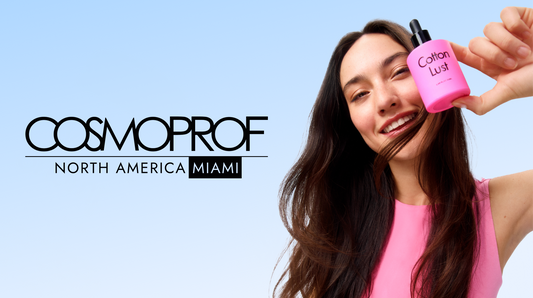Girlfriend, have you ever heard of surfactants? We're sure you have, because sulfates are a hot topic, so today we're going to tell you everything you need to know about this family of well-known ingredients that play a very important role in hair care products and are key to showing off great hair.
Let's get down to business, what is a surfactant? It is a chemical substance with a hydrophilic part (its crush is water) and a hydrophobic part (it matches oils and fats), which reduces the surface tension of a solution, and has a detergent and cleansing function, as well as an emulsifying and foaming function, and even as a hair conditioner.

Classification of surfactants
Surfactants are a family (almost) as big as the Kardashian's and are classified into four groups:
- Anionic surfactants.: to this team belong the well-known sulfates (Sodium Lauryl Sulfate and Sodium Laureth Sulfate)These are negatively charged surfactants, which have a great affinity for dirt, cosmetic residues and grease, which are positively charged. That is why they have a great detergent and cleaning power, in addition to generating a lot of foam. However, some sulfates can make the pH higher, increasing the anionic charge of the hair, favoring frizz, and are not a top choice for sensitive scalps. However, not all of the sulfates in this squad are sulfates, there are options within this group that are much gentler and more respectful of the hair, and that work super well, such as Disodium Laureth Sulfosuccinate and Sodium Coco Sulfate.
- Cationic surfactants: have a positive charge, but a very low detergent capacity, so they are usually used in hair conditioning products. Within this group, the best known are Behentrimonium Methosulfate, Cetrimonium Chloride and Behentrimonium Chloride, present in conditioners and leave-in products.
- Amphoteric surfactants: like Hannah Montana, have the best of both worlds, being both positively and negatively charged. They are often combined with anionic surfactants, for greater foaming and cleansing capacity, while having better skin tolerance. The most commonly used are Cocamidopropyl Betaine, Lauryl Betaine and Disodium Cocoamphodiacetate.
- Non-ionic surfactants: these surfactants have no electrostatic charge, are the best tolerated, and produce virtually no foam. And my friend, believe it or not, although they are not great foaming agents, they have a pretty cool cleansing power, and work great as emulsifiers and moisturizers (they are used more in skincare). Lauryl Glucoside, Decyl Glucoside, Coco Glucoside and Cetearyl Glucoside belong to this group.
Baby, our shampoos contain a mix of mild anionic surfactants (Disodium Laureth Sulfosuccinate) and amphoteric surfactants (Cocamidopropyl Betaine), for the coolest cleansing power and the best skin tolerance, while our conditioners and masks favs are formulated with cationic surfactants that minimize static electricity, frizz and hair fiber breakage.
Bestie, now you know: NOT all surfactants are sulfates, and, obviously, sulfates are not bad or toxic.











